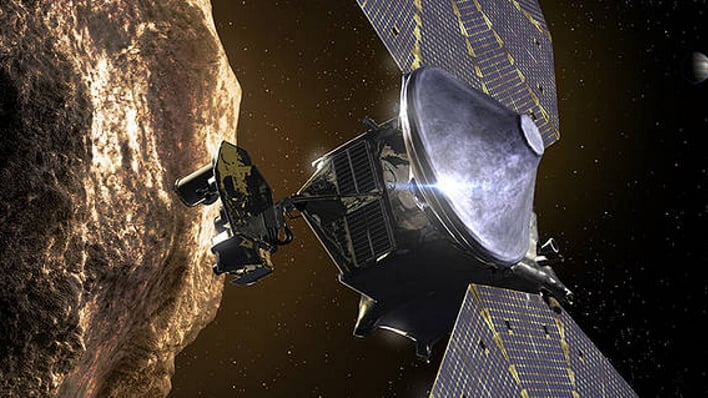NASA Launches Lucy In The Sky But It's Not Looking For Diamonds On Asteroid Targets
Earlier this morning, the Lucy probe, named after the fossilized remains of a human ancestor found in Ethiopia in 1974 rather than The Beatles’ song, blasted off from Cape Canaveral. According to the NASA press release on the mission, this is the beginning of a 4-billion-mile trip to visit two "Trojan asteroid swarms" that are associated with, but not close to, Jupiter.

By the end of the mission in 2033, "Lucy will have visited a record number of destinations in independent orbits around the Sun," and hopefully completed the primary scientific goals. Furthermore, the hope is that Lucy will have a stable enough orbit to visit Trojan swarms repeatedly for thousands or millions of years to come.
Hopefully, the equipment, such as the Thermal Emission Spectrometer with its diamond beam splitter carrying a diamond into the sky (PDF) , will be able to last that long in the void of space. Besides the scientific value of the probe, though, Lucy also has a time capsule with a golden plaque which may be found one day as a note of our early space exploration. For now, Lucy's parts only need to last 12 years, so Godspeed Lucy and best of luck on your long trip.

